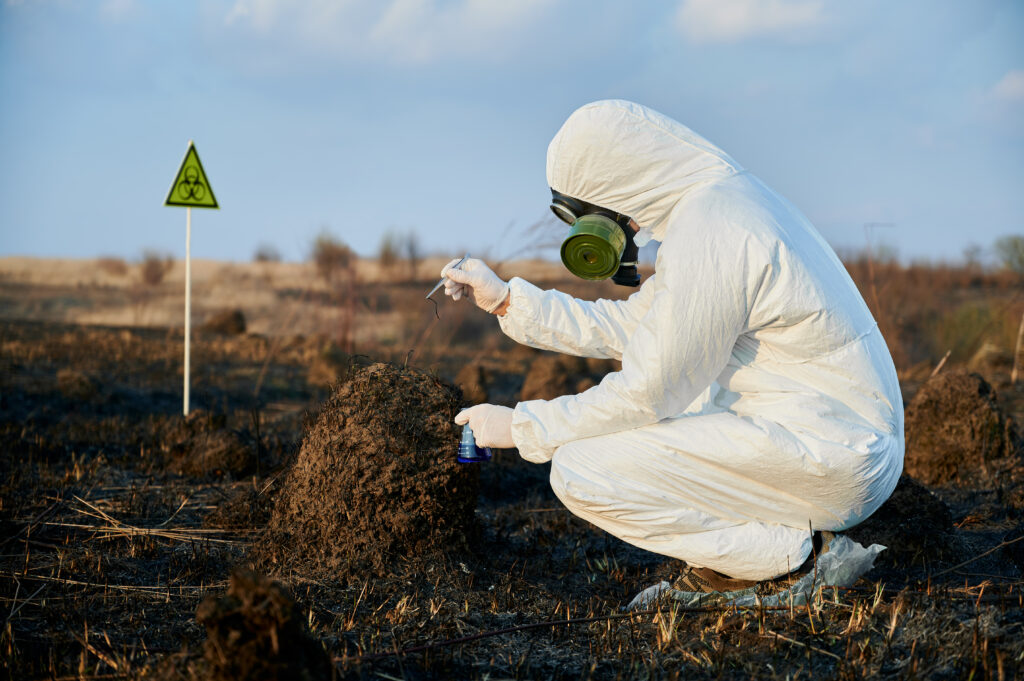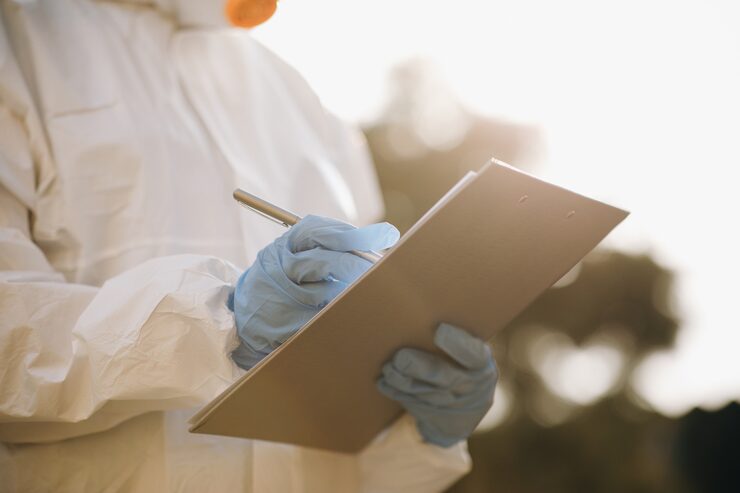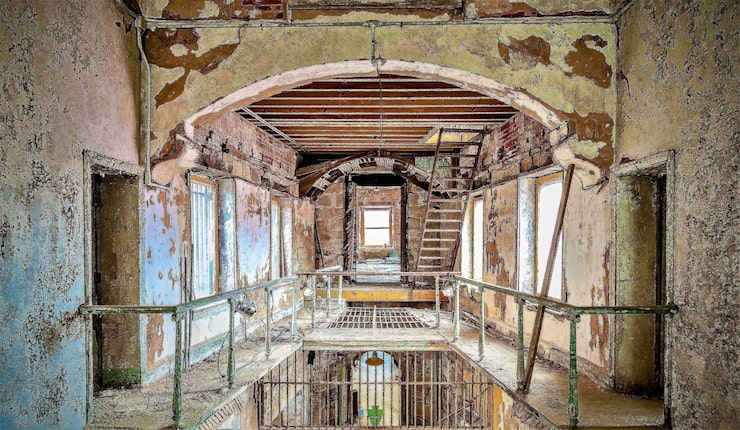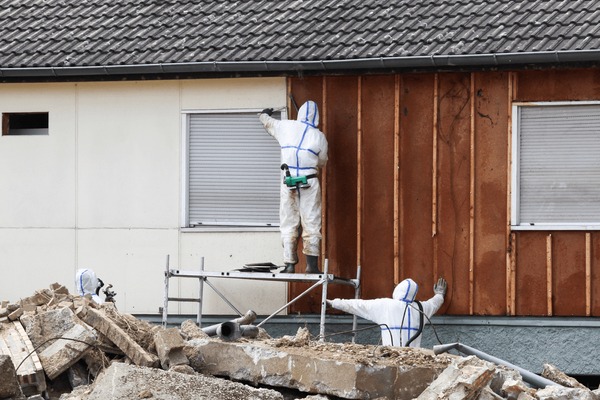Being aware of asbestos in building materials can be simple enough. However, naturally occurring asbestos can be a different challenge altogether. Thus, this post will explore that concept for the benefit of environmental consultants, geologists, health and safety professionals, local government bodies, and concerned residents.
What Is Naturally Occurring Asbestos (NOA)?
Naturally occurring asbestos (NOA) refers to asbestos minerals found naturally in rock formations and soils. Ultramafic rocks like serpentinite rocks are the primary suspects in these scenarios.
When disturbed, they can release microscopic fibers into the air. These fibers, if inhaled, can lead to serious and often incurable lung diseases, including mesothelioma, lung cancer, and asbestosis.
So, asbestos in natural form releases its fibers when disturbed by activities such as construction, excavation, or erosion.
Types of Asbestos Naturally Occurring in Australia
Australia is home to various geographical formations, and rocks are very common in this country. Therefore, it is also home to some of the most notorious NOAs found in rock formations.
Here, let’s take a look at some of the forms of asbestos that is naturally occurring in Australia, and identify which ones are the most common in the landmass:
| Type | Fibrous Appearance | Common in Australia or Not | Level of Hazard |
|---|---|---|---|
| Chrysotile (White) | Curly, flexible | Common | High |
| Amosite (Brown) | Straight, brittle | Common | Very High |
| Crocidolite (Blue) | Fine, needle-like | Common | Extremely High |
| Tremolite (Colourless) | Brittle | Common | High |
| Actinolite (Dark Green) | Fibrous | Common | Moderate-High |
Table 1: Types of NOAs in Australia
These are the most commonly available naturally occurring asbestos types in Australia. While undisturbed, they exist without any harmful influences, but these NOAs can become a risk when the rock or soil is disturbed.
Where Is NOA Found in Australia?
Five types of naturally occurring asbestos have been observed as common, but where is asbestos naturally found in Australia?
Let’s look into some of the following options:
- Wittenoom, Western Australia: It is a former crocidolite mine.
- Northern New South Wales: The NOAs are common around Barraba and the Great Serpentine Belt.
- Eastern Victoria: NOAs are commonly found in the Latrobe Valley and Dargo.
- Central Queensland: The Central QSL area is known for having many Chrysotile-bearing ultramafic belts.
However, which of these areas can be considered high-risk locations due to the prevalence of NOAs? Here’s a chart representing the high-risk areas in all 6 Australian states:
| State/Territory | NOA-Risk Areas | Basic Info |
|---|---|---|
| Western Australia | Pilbara, Wittenoom | Historical mining area, now banned |
| New South Wales | Barraba, Tamworth, Glen Innes | Serpentine belts containing tremolite |
| Victoria | Dargo, Buchan, Latrobe Valley | Natural and construction risks |
| Queensland | Marlborough, Rockhampton | Chrysotile mining zones of the past |
| Southern Australia | Flinders Ranges | Minor occurrences |
| Tasmania | Savage River Mine, Boyd Volcanic Complex | Naturally occurring asbestos deposits |
Table 2: Locations with NOAs in Australia
So, basically, the six Australian states are all locations that answer the question of “does asbestos grow naturally?” with each state having a specific high asbestos risk location.
Why Naturally Occurring Asbestos Is Dangerous
As discussed before, when left untouched, natural asbestos deposits are completely harmless. These substances are microscopic in nature and can go airborne only when disturbed.
And when these microscopic fibers are inhaled, they can lead to serious illnesses of the lung, with some of them even having the potential of being untreatable. Major lung diseases are all potential risks to the inhalation of natural asbestos fibers.
However, the next question in this context would be, “To whom do the NOAs pose a threat?”. Construction workers, workers in excavation sites, miners, property developers, and so on, are primarily in the most danger. But that is not where the dangers end. Communities that live near the excavation sites are also vulnerable to the risks of asbestos in natural form.
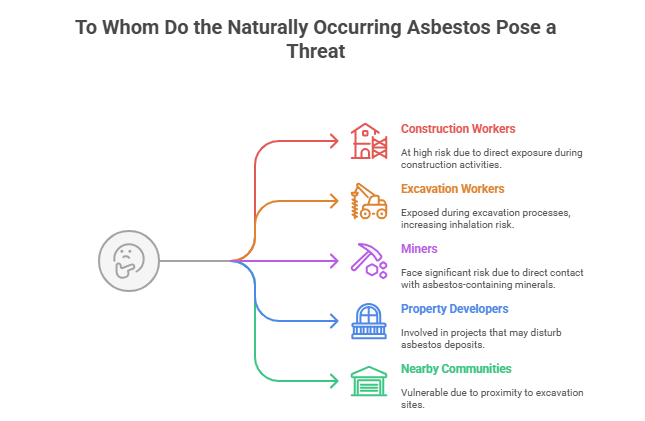
And NOAs, unlike manufactured asbestos, cannot be regulated, as they are naturally occurring in minerals, and cannot usually be disposed of.
Activities That Disturb NOA
While naturally occurring, the disturbance of the NOAs generally occurs due to man-made activities. These activities can include:
- Civil Construction: The construction of roads, tunnels, and dams.
- Earthworks and Landscaping: Man-made alterations to an area of land.
- Civil Construction: The construction of roads, tunnels, and dams.
- Quarrying: Extraction of materials from the earth.
- Bushwalking: Backpacking or traveling along hiking trails.
All of these activities can cause disturbances of the land and of rock beds, which further lead to the natural asbestos fibers being released into the air.
Alternatively, extreme weather like floods and landslides can also cause disturbances to the soil or rocks, leading to the naturally occurring asbestos fibers being exposed.
And based on that, here’s a chart describing the risk levels and exposure risk from common activities:
| Activity | Level of Exposure Risk | Recommended Control Measures |
|---|---|---|
| Road construction | High | Environmental site assessments |
| Excavation or mining | Extreme | Dust suppression, zone restrictions |
| Landscaping | Moderate | Educating the public |
| Hiking along trails | Low to Moderate | Raising public awareness |
Table 3: Exposure Risk and Control Measures
Identification and Management of NOA Risks
With the risks that naturally occurring asbestos poses to health and the environment being known, here are some measures for the identification and management of risks posed by NOAs.
Site-specific Geotechnical Assessments
This is an identification mechanism to evaluate the disturbance of naturally occurring asbestos. The process consists of a detailed analysis of the site’s soil, rock, and groundwater situation that helps determine how safe the ground is to start a project.
XRD, PLM, or SEM Testing in labs
These tests are used to identify the structural integrity of rocks and minerals. And with these tests, the asbestos content and the level of asbestos disturbance can be identified in NOAs.
Visual Indicators
The simplest test, the visual cues can be used to differentiate naturally occurring asbestos from other rocks. Some notable examples of this might include the presence of fibrous veins in the rock cross-section or even the presence of serpentinite outcrops.
So, after the indication, how do you work on the management? Here are some steps that can be followed, especially when proceeding with an environmental project:
- You can simply start by avoiding disturbing the soil in high-risk areas.
- Consider activities in your projects, such as water suppression, soil binding agents, or using geotextile covers.
- The safety of the project teams can be ensured with the use of PPE, air monitoring systems, and HEPA vacuums.
Community Education and Public Health Awareness
Finally, to ensure that natural asbestos is not disturbed, and to keep the public safe, a very crucial step is to make the public more aware.
Community notification regarding the hot zones where asbestos in natural form is common can be a simple first step to consider.
Also, safe zone mapping can be important. As an example, the high-risk Wittenoom mine has been completely abandoned, with concerns about long-term health impacts. The widespread deaths and diseases related to asbestos caused the town to be fully evacuated.
Summing Up
Unlike asbestos in building materials and artificial fibers, naturally occurring asbestos is often a silent hazard due to it not being easy to detect. It can affect people all over Australia, be it rural or industrial areas. Thus, stronger regulation measures, public education and active detection practices need to be maintained.
Concerned About NOAs? Take Preventive Measures Now!
Worried about the silent threat of the NOAs to your planned project in Australia? Taking preventive measures, such as testing of the soil and minerals, as well as protective equipment, can be beneficial.
Why not contact us? Our experts will provide a quick and accurate evaluation of the land, and you can start your project in a secure manner without added concerns!
Frequently Asked Questions
Can NOAs Be as Dangerous as Man-made Asbestos?
NOAs can be even more dangerous than artificial asbestos. This is because they cannot be as easily detected, making prevention measures more challenging.
Can I Detect NOAs on My Property by Myself?
Yes. You can, by identifying visual cues. Crystalization patterns and serpentinite presence can be some of the most obvious hints to consider.
Can People Still Visit Wittenoom Today?
As discussed, Wittenoom is a ghost town today. As of 2022, the entire town has been evacuated, and the zone is fully quarantined. You are strongly discouraged from visiting the location.
What Should I Do in Case NOA is Detected Nearby?
It is crucial to avoid disturbing the NOA when detected nearby, potentially wetting your surrounding surfaces, and keep doors and windows closed.


